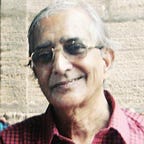Sir George Everest, early surveyor of the Himalayas
The world’s highest peak, which had been called Peak XV, was renamed in the honor of this energetic man in 1865. Sir George Everest was the first Surveyor General of British India.
Photo: Mount Everest Photograph: Duncan Willetts/Sportsphoto Ltd./Allsta
World over, most of the people are quite familiar with the tallest roof of the world — Mt. Everest. The name Everest”, a geographical entity, will last for ever as long as the the humanity lives. Quite suitable to the lonely peak far removed from the humanity on the plains, its name is simple and can be pronounced very easily. Little known is the fact, the Englishman who happened to be a Surveyor and Geodetic expert after whom the tallest peak in the Himalayas is named, did not go along with the Survey department and was against naming the peak after him. But, it was not to be. He never got to see with his own eyes the tallest peak that would bear his name for ever.
Sir George Everest (July 4, 1790 — Dec. 01, 1866), born in Gwernvale Manor, just west of Crickhowell in Powys, Brecknockshire, Wales) was a British Geo- desist, surveyor and geographer. He held the post of the Surveyor General of India 1830 through 1843 and was mainly responsible for completing the trigonometric survey of India, which formed the basis of the accurate mapping of the subcontinent and its morphology. In recognition of his distinguished and dedicated services in the British India survey department, Everest was elected a Fellow of the Royal Society in 1827. Mount Everest, the world’s highest peak, was officially renamed in his honor in 1865.
Having undergone engineering training at military schools in England, Everest came to India when he was in his teens and joined the East India Company in 1806 and in the following seven years he served Bengal, NE India. During his stint in Java (1814–16) under British occupation of the Dutch East Indies, Everest conducted extensive survey there. After his return to India in 1818, he worked with the survey of India till 1843. His flair for Mathematics ans Astronomy stood him in good stead. Commissioned into the Royal Artillery, in 1818, Lt. Everest became an assistant to Colonel William Lambton, who had just started the ‘’Great Trigonometrical Survey’’ of the subcontinent in 1806. After Lambton’ unexpected death in 1823, Everest evinced keen interest to continue with the Trigonometric survey work left behind by his senior. In 1830 he was promoted as the Surveyor-General of India, covering a vast stretch of land. Keenly interested in his line of work and being a maverick, Everest introduced innovative and useful methods for accurate surveys, using special instruments and gathered detailed geodetic data all the way from Cape Comorin (Cape Kanyakumari)in the south most tip of the Peninsular India — along the meridian arc from southern India, extending way north including the Himalayas to Nepal, a distance of about 2,400 kilo meters (1,500 mi). William Lambton and his team began the crucial work way back in 1806 and it lasted for several decades. It was a tedious and time consuming survey work, covering varied terrains, stretching a vast area.
After his retirement in 1843, he returned to the UK, where, he was knighted in 1861 and later elected as the vice-president of the Royal Geographical Society. Everest died in London in 1866 at the age of 76 and was buried in St. Andrew’s Church, Hove, near Brighton, England
Tit-Bits:
01. Radhanath Sikhdar, an Indian mathematician with the Great Trigonometrical Survey of India, discovered the highest summit in the world after detailed survey data. This was later confirmed and was called Chomolungma and Sagarmatha by the Tibetans and the Nepalese respectively. In spite of it the British made a decision in 1856 to name it after Colonel George Everest, head of the survey over which Everest was quite embarrassed. Official announcement was made only in 1865 by the Royal Geographical Society.
02. Mount Everest, in the early stages was referred to as Peak XV.
03. For over 150 years scientists have tried to establish the exact height of Mount Everest. To settle the matter once and for all, Nepal has ordered a new survey of the world’s highest mountain.
04. This enormous peak was surveyed by Everest’s successor, Andrew Scott Waugh, in his capacity as the Surveyor-General of India.
05. Among the many discoveries of the Survey were the demarcation of the British territories in India and the measurement of the height of the Himalayan giants: Everest, K2, and Kanchenjunga.
06. The measurements of the geodesic anomaly led to the development of the theories of Isostasy — -the state of gravitational equilibrium between Earth’s crust (or lithosphere) and mantle such that the crust “floats” at an elevation that depends on its thickness and density.
Ref:
https://en.wikipedia.org/wiki/George_Everest
https://www.theguardian.com/theguardian/from-the-archive-blog/2011/jul/21/mount-everest-name-1856
Originally published at http://navrangindia.blogspot.com (modified, June 18 2020).
